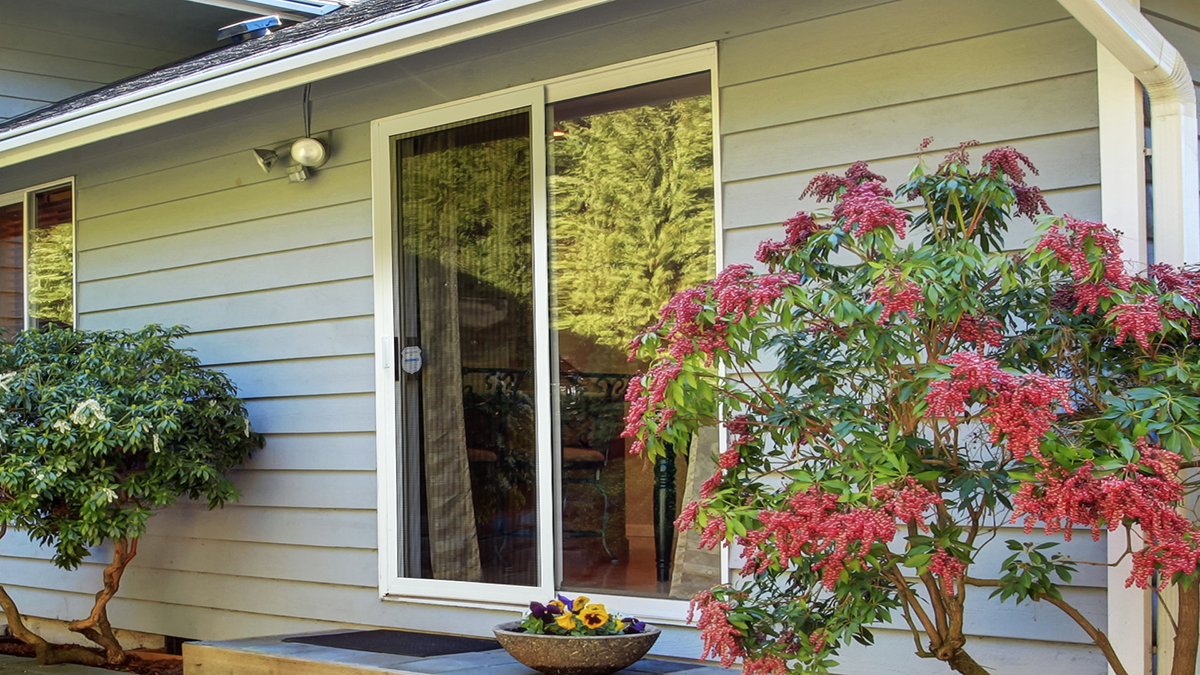Q+A with Quanex | Advancing Home Security Innovation
The era of high-performance window and door screens for residential safety, security and durability has arrived

 Last year, Quanex partnered with Advanced Screen Systems Inc. and debuted its security screen door with Meshtec technology, capitalizing on the growing demand for high-performance window and door screens that provide safety, security and durability in residential buildings. Adam Wilson, vice president of strategic sales of North American fenestration at Quanex, took the time to sit down with Window + Door to discuss its approach to innovation, its design and development process, and meeting trends in fenestration.
Last year, Quanex partnered with Advanced Screen Systems Inc. and debuted its security screen door with Meshtec technology, capitalizing on the growing demand for high-performance window and door screens that provide safety, security and durability in residential buildings. Adam Wilson, vice president of strategic sales of North American fenestration at Quanex, took the time to sit down with Window + Door to discuss its approach to innovation, its design and development process, and meeting trends in fenestration.
Window + Door: A surge in demand for safety and security-oriented fenestration products is predicted for 2024. Are you seeing an increase in requests for these types of products from your customers?
Adam Wilson: Yes, we definitely realize that security and protection have become a priority with consumers. Our customers were asking for innovation. With the industry’s mature insect screen product, which hasn’t had many changes in several decades, we saw a great opportunity for innovation. We took what is sometimes an afterthought and turned it into a product with a lot more use and that ensures safety and peace of mind.
It’s not just keeping insects out. The Quanex security screen systems using Meshtec technology actually create a security system for your patio door. And for homeowners prioritizing security, the mesh, when combined with the multi-point locking system, meets the highest international standards for knife shear, impact and pry tests. It’s important to note that according to statistics, the patio screen door is the most vulnerable point for intruders to gain access to your home. It’s often the easiest and most accessible way for intruders to enter, especially when the main home door is left open for the screen door to allow fresh air into the living space.
WD: What was the design and development process behind integrating Meshtec technology into your products?
AW: There’s extensive research and development that went into this product. We had a company approach us about a mesh product, very unique in the industry, which has been utilized to great success for several decades in Australia. More than 70% of homes in Australia already have these security screens, doors and windows, which add an extra layer of protection against intruders, as well as help deflect embers from the country’s perennial wildfires from entering a home.
Last year, we partnered with Advanced Screen Systems, which has some exclusivity to distribute and use Meshtec technology in North America. As a leading manufacturer working with many in the fenestration market, we looked at how we could utilize this with windows and doors, and how to take this out to the market.
WD: What performance metrics or testing procedures were used to ensure the quality and durability?
AW: It’s been put through a lot of stringent testing, including to high-level international standards. We’ve had an impact test where a 92-pound ball is repeatedly slammed against the screen, simulating someone trying to run their shoulder into it. Another one is what they call a ‘Jimmy test’ where a pry bar is used in several locations around the door to try to pull it off. The last one is a knife shear test, which simulates attack by a heavy-duty knife, numerous times, under a constant force of 350 Newtons in both directions to try and cut the screen. It’s been subjected to salt spray, solar heat, LUX intensity and aerodynamic testing. And that’s just the mesh. The multi-point locking system and frame used in this design is so strong that it can withstand even the toughest of impacts. And that’s not all, it also prevents the door from lifting off of the track, ensuring maximum safety.
WD: What specific features or technologies differentiate it from existing products in the market?
AW: This particular woven, high-tensile, stainless-steel mesh comes to us flat, rather than in rolls, free from the defects normally caused by weaving high-tensile steel wire. And it’s not just any type of stainless steel, but high-end recycled stainless steel; continuously spooled, run through looms, stretched to make it rigid, and then uniquely powder coated to protect the final architectural finish from corrosion and weathering. Aesthetically, it looks like any other insect screen that you would find on a window or door, which is what you want.
And then there are the unique features on the locking side with a multi-point locking system, locking in five locations along the wall where you would normally have a single-point locking system. You can’t see that from the outside, it takes place in the insect track. On the passive side, we have an interlock for an additional level of continuous security from top to bottom, creating a really robust security door.
WD: What is the focus for you moving forward, what is your overall product strategy?
AW: Well, other security-type products are unsightly or have bars to prevent entry. We don’t want homeowners to settle for a basic patio screen when they can have a premium product that provides built-in protection and adds value and safety to their home space. There’s not really a competitive mesh out there yet, and this technology can do things that really transform it into its own product category. We’re hoping to bring over a lot of this knowledge and understanding of what these screens can do to the U.S. marketplace. We’re continuing to look at how we can make this product better and easier to manufacture. We’re in the early stages of that, but we have a lot of great ideas about how to make that happen. Ultimately, once the U.S. market learns about the advantages of the Meshtec mesh and security screens, Quanex plans to launch additional innovative products into the market over the next few years.
